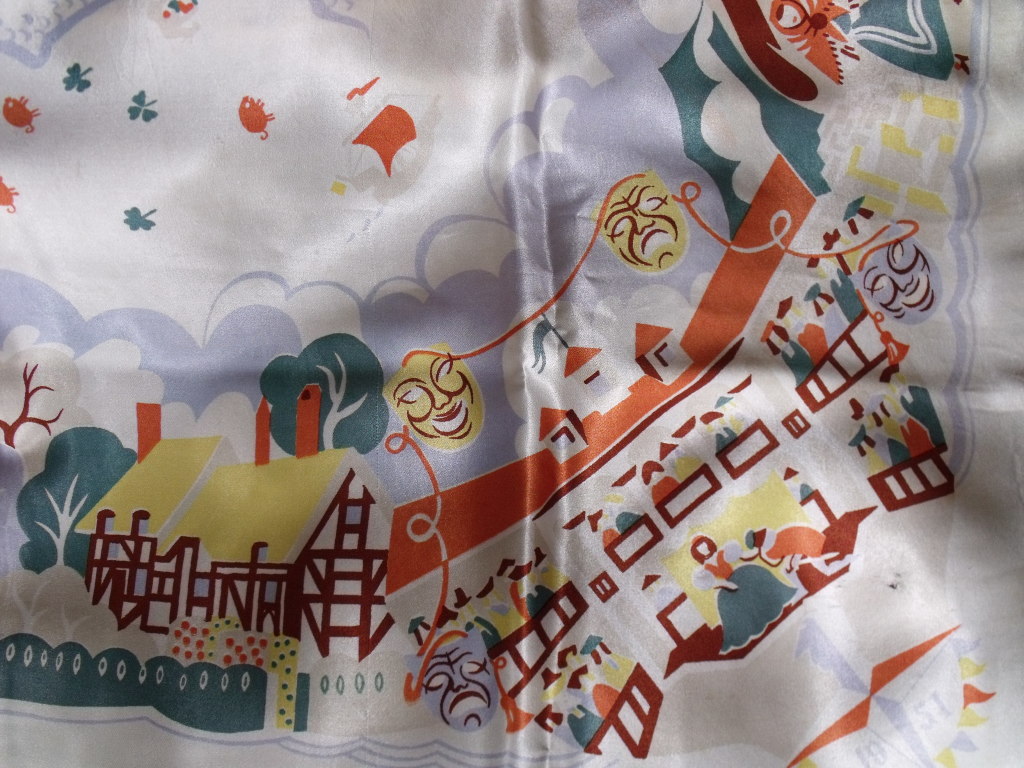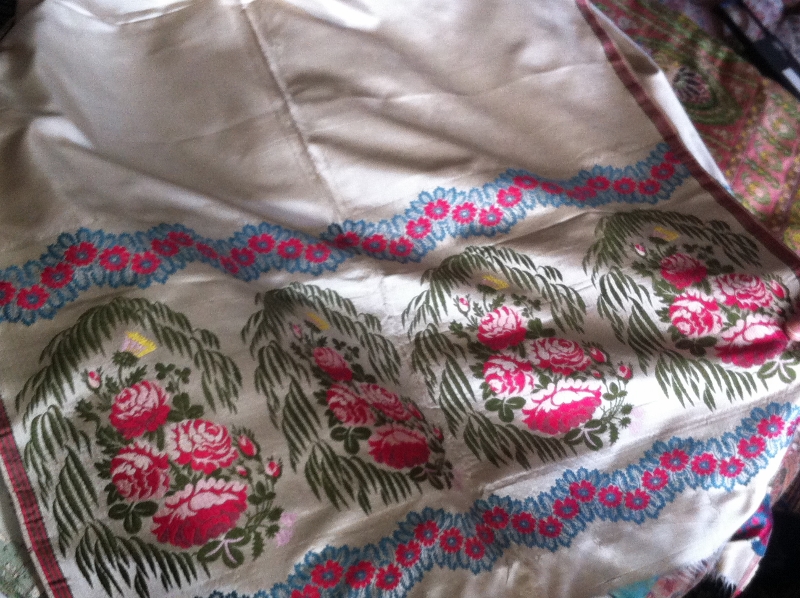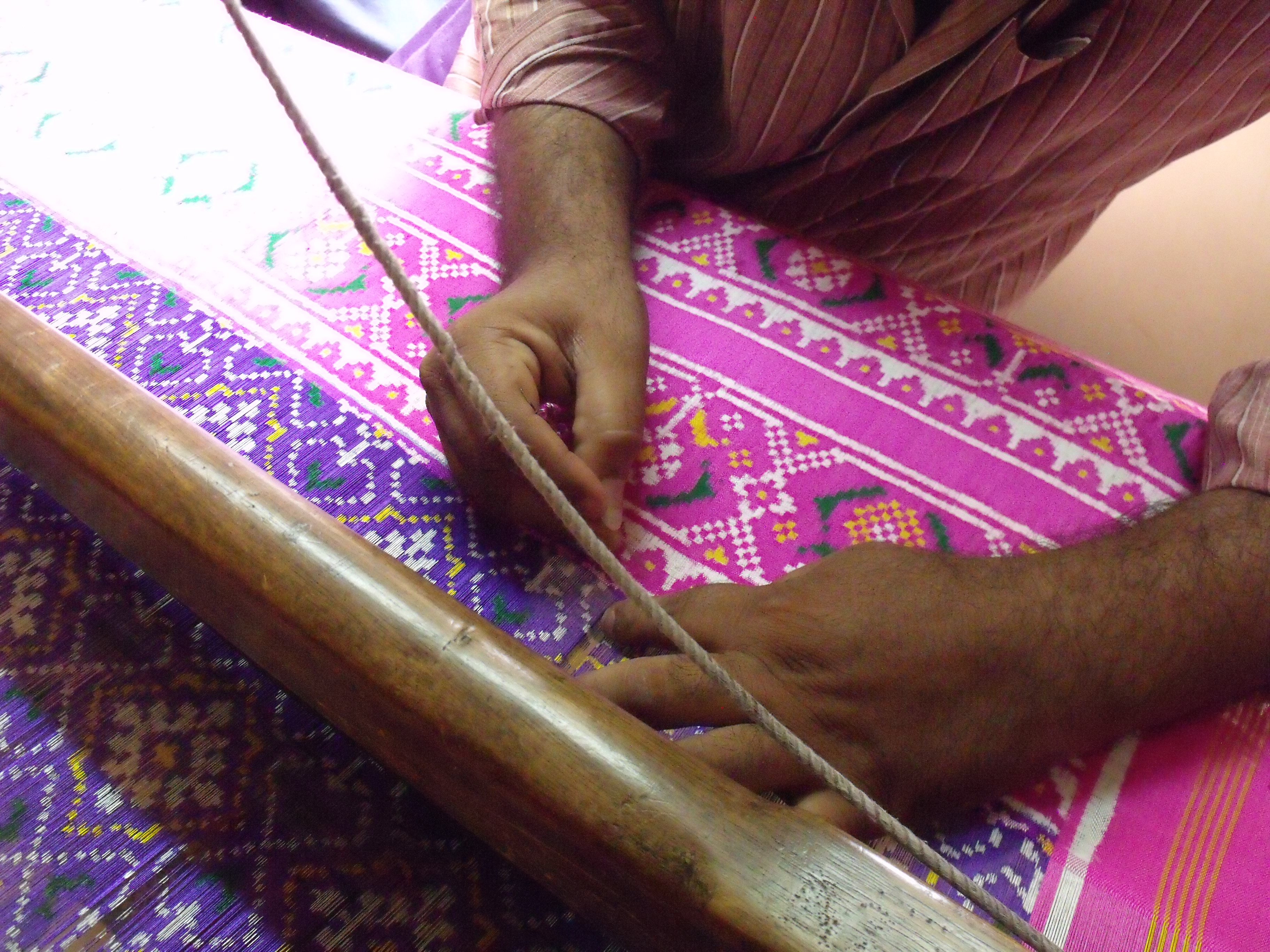Last week, I joined a group of woven textiles enthusiasts at textiles dealer and Textiles Society events organiser, Meg Andrew’s house to learn weaving techniques from master weaver Sue Kerry. Sue has had an extensive and diverse career. She learned all the techniques of weaving in industry and at Birmingham College of Art. After college she worked as a weaver’s apprentice in Suffolk, and also in Perugia, handloom weaving luxurious cloths. Since then she has documented textiles in the Warner archive for 12 years, consulted for other businesses on their archives and worked on restoration projects.
Sue talked the group through a collection of samples she had acquired over many years, as well as using fabric samples from Meg’s collection. The day was formed by explaining weaving techniques, finishing treatments and the type of fibre used for each. She started with plain weave, which even though simple, can produce a huge variety of looks and feels depending on the fibre and the treatment. For example chintz (plain woven and block-printed or painted) is polished with a heavy coating of wax to give it a heavy drape and shiny look for furnishings.

The techniques became more complicated throughout the day. We were shown hopsack, twill weave, weaving with gold and metal , dobby weaving, chenié (which involves the warp being painted before the cloth is woven), ottoman rib weaving, lappet muslins, Madras muslin, velvet, ciselé velvet, corduroy, waffle or honeycomb, various types of jacquard, silk lampas, damasks and liseré examples.
Amongst the pieces that wowed the group was a sample of the luxurious woven cloth of gold, a similar gold cloth was worn by the Queen at her coronation in 1953. The fabric was woven using a foiling technique which involves weaving a base cloth of silk with gold yarn being used as a face cloth. This was woven using a twill structure which joins both the silk and ground cloth together. We were also shown a dishcloth woven in the leno technique, where each weft yarn is trapped and twisted in-between two warp yarns; before being shown a beautiful fine muslin Madras shawl. It took some close studying to realise the fine muslin madras shawl used the same technique as the much chunkier open-weave dishcloth!

We were particularly awed by a couple of rare vibrantly coloured Spitalfield’s silk shawls from Meg’s collection. They were woven using the lampas technique, and a brocaded lampas. A lampas involves the whole patterning being fed through using a supplementary weft onto the ground of the cloth either in twill, plain or jacquard weave. The combination of the striped patterned border with floral damask style ground in these shawls involves a hugely complicated weaving technique (too complex to explain here!), hence the rarity of this type of weaving.

This thoroughly informative and enjoyable session left the group overwhelmed, but inspired and enthusiastic to go and try weaving to really understand the complex techniques more fully.









